Слайд 2
The basis of the English national language
One of the major characteristic features

of a nation is the national language. It rises above all territorial and social dialects and unites the whole nation.
Слайд 3As a rule the national language develops on the basis of a
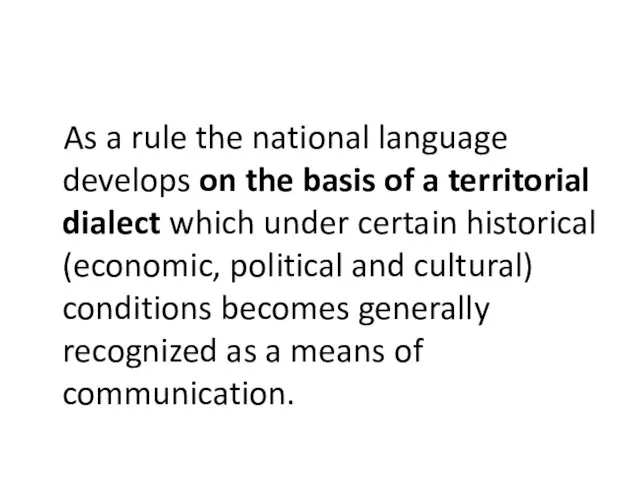
territorial dialect which under certain historical (economic, political and cultural) conditions becomes generally recognized as a means of communication.
Слайд 4The English national language has developed on the basis of the dialect

of London. After the Norman conquest London became the political and cultural centre of England.
Слайд 5As London was situated on both banks of the Thames, its dialect
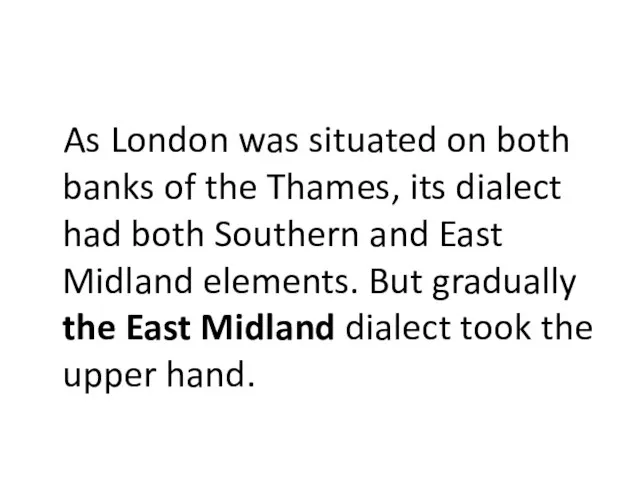
had both Southern and East Midland elements. But gradually the East Midland dialect took the upper hand.
Слайд 6The prestige of the dialect was great because East Midland was the
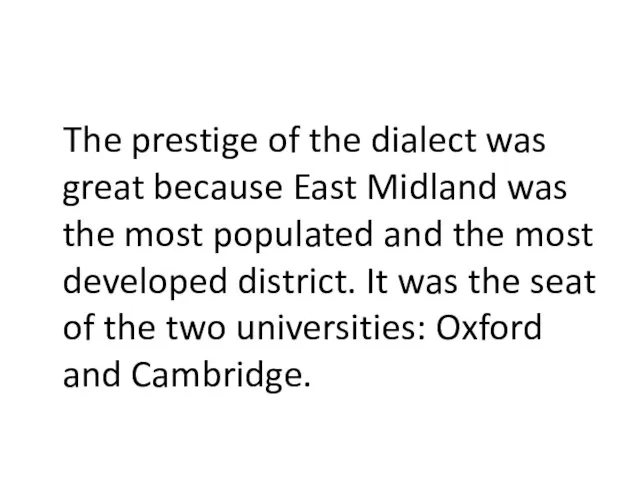
most populated and the most developed district. It was the seat of the two universities: Oxford and Cambridge.
Слайд 7The influence of the first printers in fixing and spreading the written

form of English was outstanding. The language they used was the London literary English established since the age of Chaucer and slightly modified.
Слайд 8With relatively cheap printed books available to a greater number of readers,
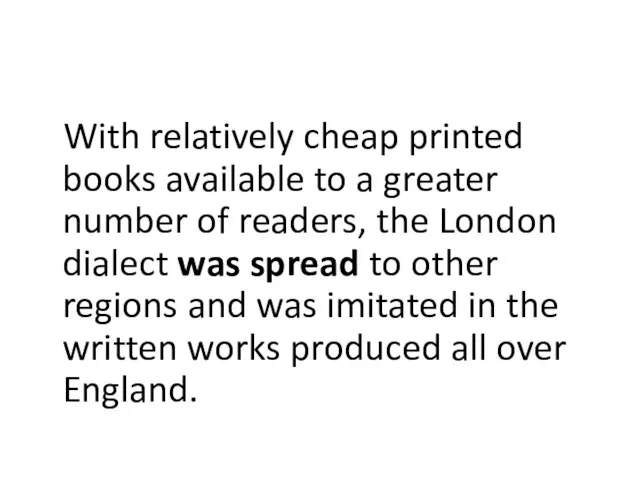
the London dialect was spread to other regions and was imitated in the written works produced all over England.
Слайд 9Caxton’s spelling was more normalized that the spelling of the manuscripts. Caxton’s
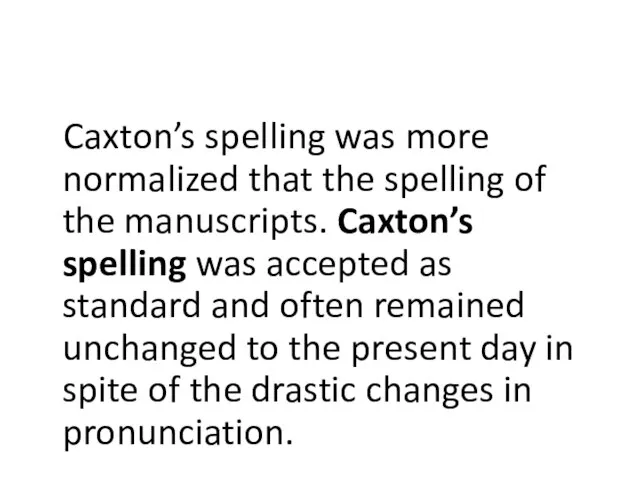
spelling was accepted as standard and often remained unchanged to the present day in spite of the drastic changes in pronunciation.
Слайд 10The effect of printing on the development of the language was so
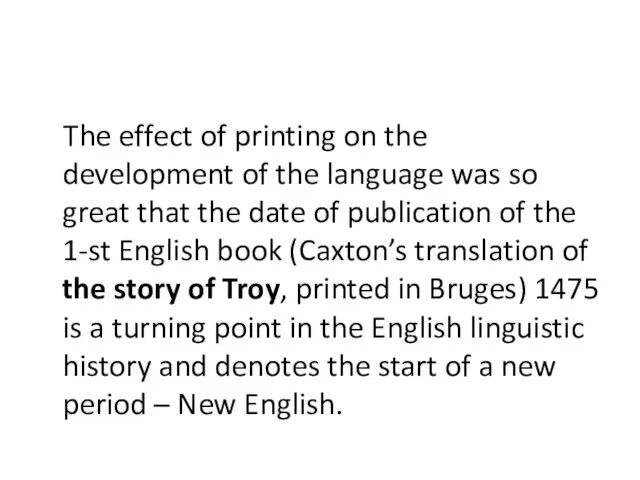
great that the date of publication of the 1-st English book (Caxton’s translation of the story of Troy, printed in Bruges) 1475 is a turning point in the English linguistic history and denotes the start of a new period – New English.
Слайд 11The Written Standard
The growth of the national literary language and fixation of
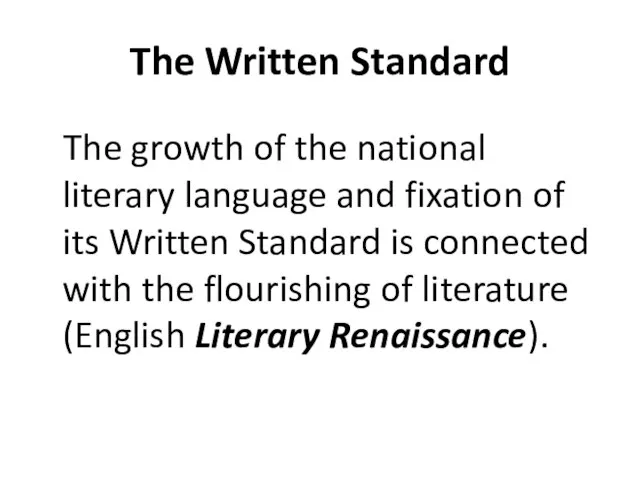
its Written Standard is connected with the flourishing of literature (English Literary Renaissance).
Слайд 12The beginning of the literary efflorescence goes back to the 16-th century.
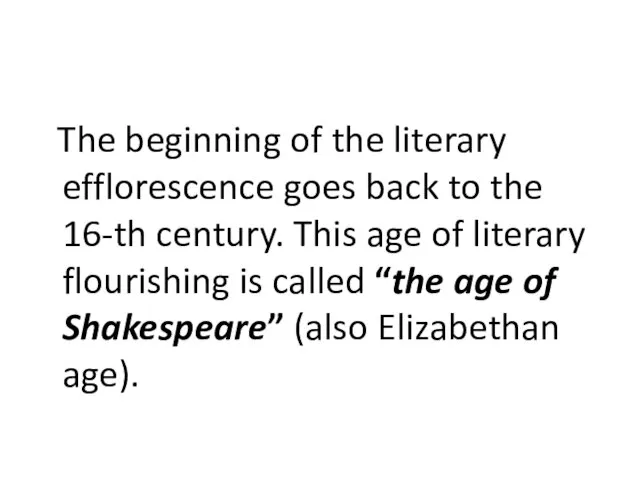
This age of literary flourishing is called “the age of Shakespeare” (also Elizabethan age).
Слайд 13The most notable figures were Thomas More (1478 – 1535) and William
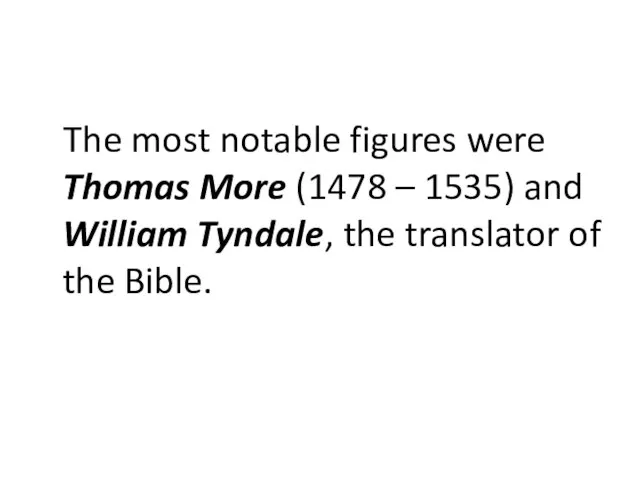
Tyndale, the translator of the Bible.
Слайд 14• The main work by Thomas More is “Utopia” (1516). It was
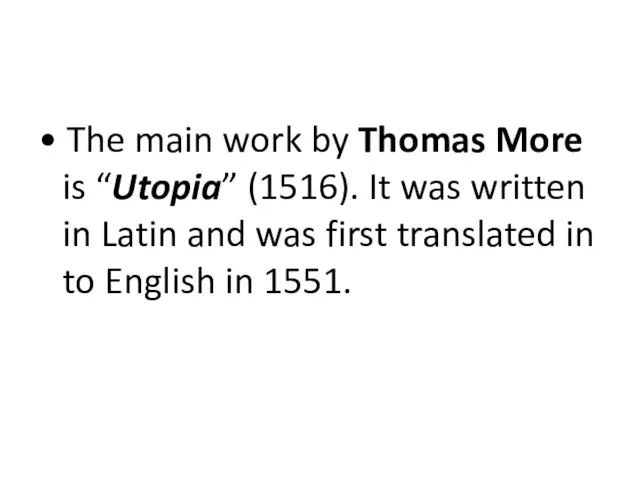
written in Latin and was first translated in to English in 1551.
Слайд 15• William Tyndale completed his new English translation of the Bible in
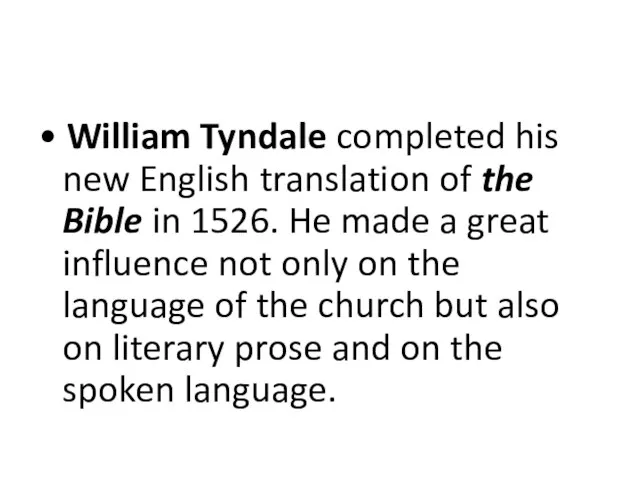
1526. He made a great influence not only on the language of the church but also on literary prose and on the spoken language.
Слайд 16• William Shakespeare (1564 – 1616) was the chief of the Elizabethan
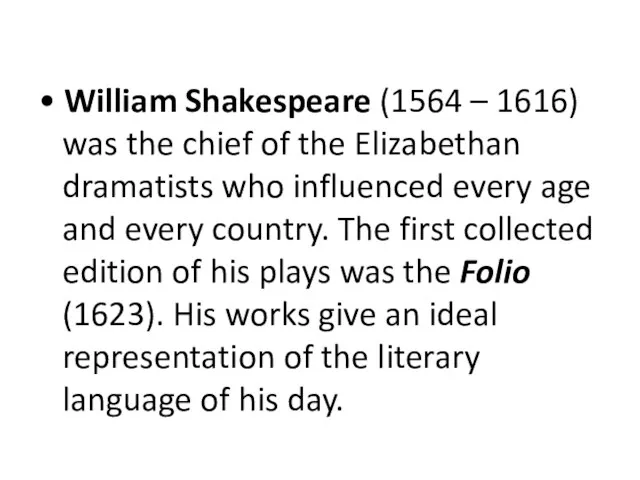
dramatists who influenced every age and every country. The first collected edition of his plays was the Folio (1623). His works give an ideal representation of the literary language of his day.
Слайд 17His vast vocabulary (over 20 thousand words), freedom in creating new words
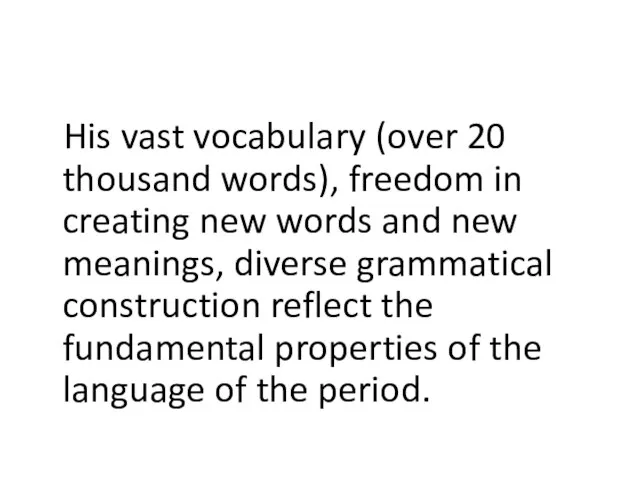
and new meanings, diverse grammatical construction reflect the fundamental properties of the language of the period.
Слайд 18Early NE Written Accounts
The number of the written matter of the
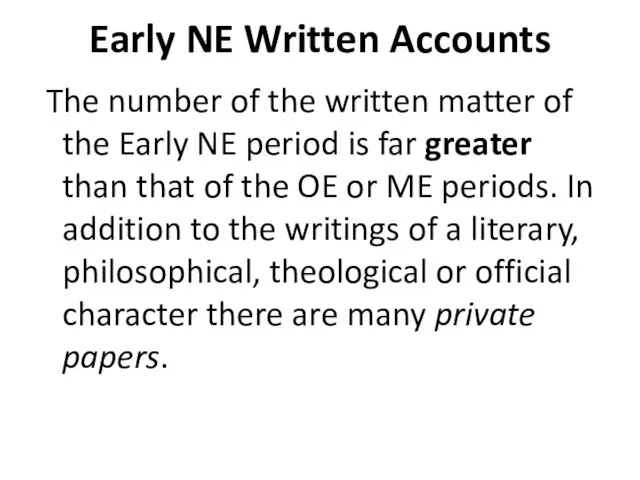
Early NE period is far greater than that of the OE or ME periods. In addition to the writings of a literary, philosophical, theological or official character there are many private papers.
Слайд 19Family archives contain papers written both by educated and by uncultivated people.
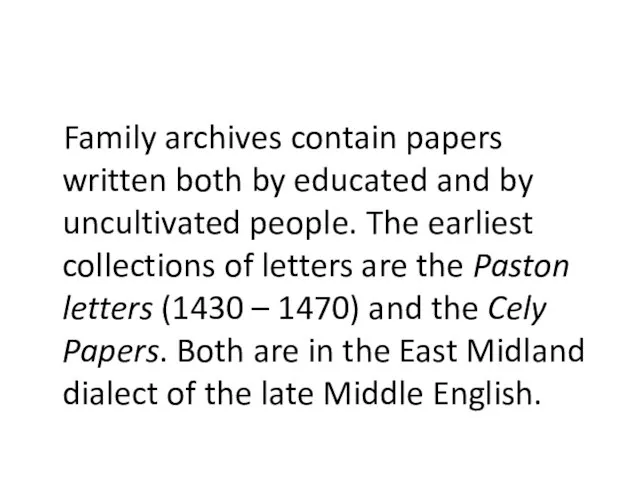
The earliest collections of letters are the Paston letters (1430 – 1470) and the Cely Papers. Both are in the East Midland dialect of the late Middle English.
Слайд 20Numerous private letters of the 16-th century give a fair picture of
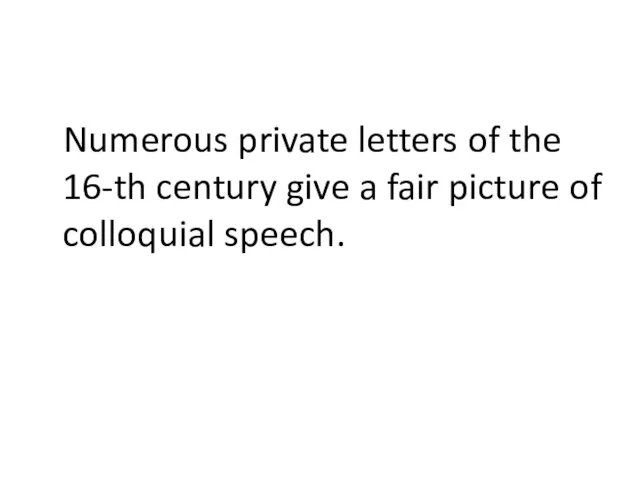
colloquial speech.
Слайд 21The renewed interest in living languages in the 16-th and the 17-th
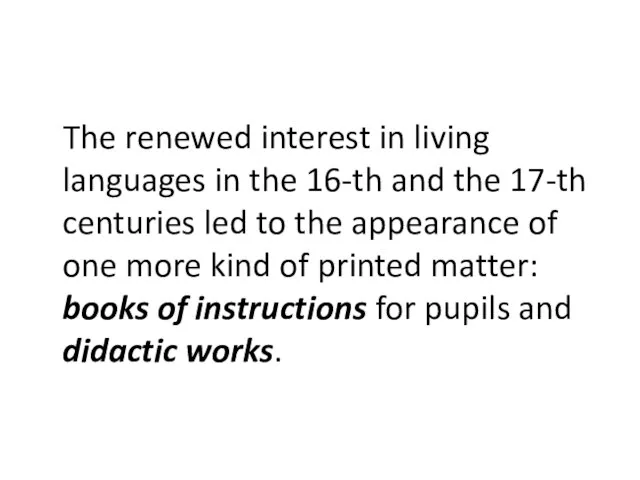
centuries led to the appearance of one more kind of printed matter: books of instructions for pupils and didactic works.
Слайд 22The first dictionaries
The development of international trade created a demand for
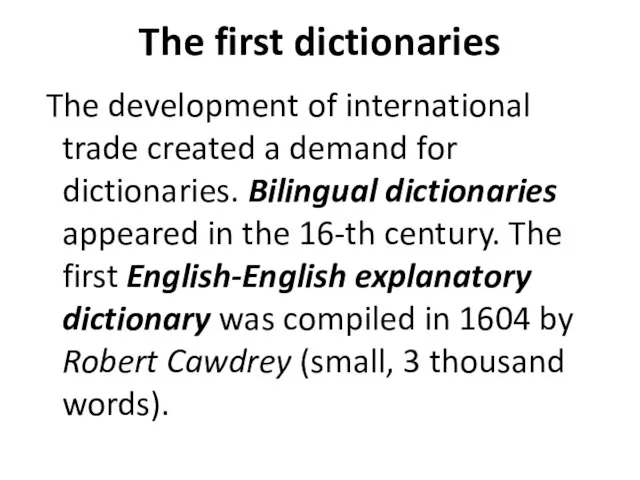
dictionaries. Bilingual dictionaries appeared in the 16-th century. The first English-English explanatory dictionary was compiled in 1604 by Robert Cawdrey (small, 3 thousand words).
Слайд 23Towards the end of the Early NE (mid. 17-th) one of the

forms of the national language, its Written Standard was established. In the 15-th and the 16-th centuries the speech of London became more mixed due to the intermixture of the population.
Слайд 24The Written Standard of the early 17-th century was less stabilized and
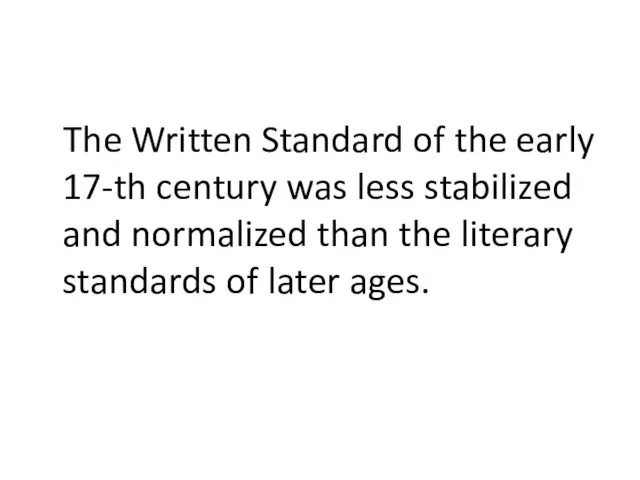
normalized than the literary standards of later ages.
Слайд 25The writings of the Renaissance show a wide range of variation (in
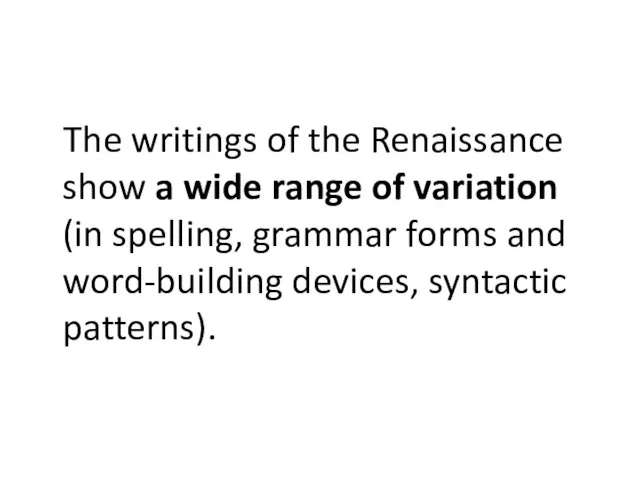
spelling, grammar forms and word-building devices, syntactic patterns).
Слайд 26The existence of a prestige form of English in Early NE (a

sort of standard) is confirmed by the statements of contemporary scholars.
Слайд 27Grammars of English
This period was followed by the period of “fixing
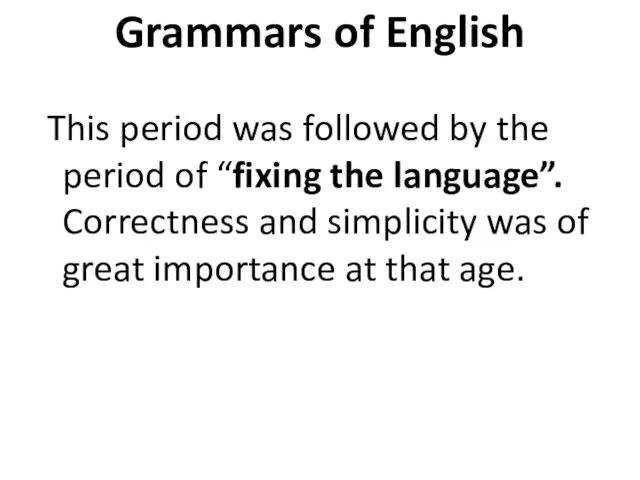
the language”. Correctness and simplicity was of great importance at that age.
Слайд 28In 1664 the Royal Society appointed a special committee for “improving the
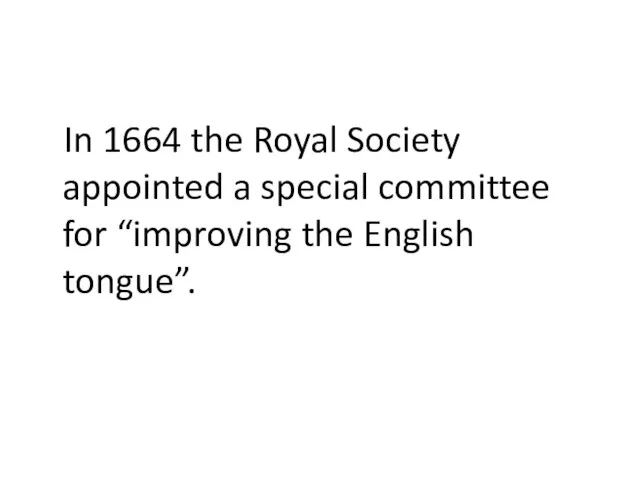
English tongue”.
Слайд 29Many new grammars of English were compiled in this age. For example:
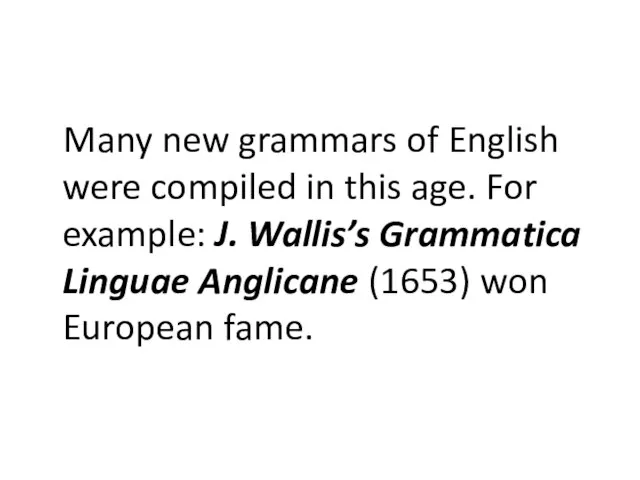
J. Wallis’s Grammatica Linguae Anglicane (1653) won European fame.
Слайд 30
The Spoken Standard
The written standard was probably fixed and recognized by the
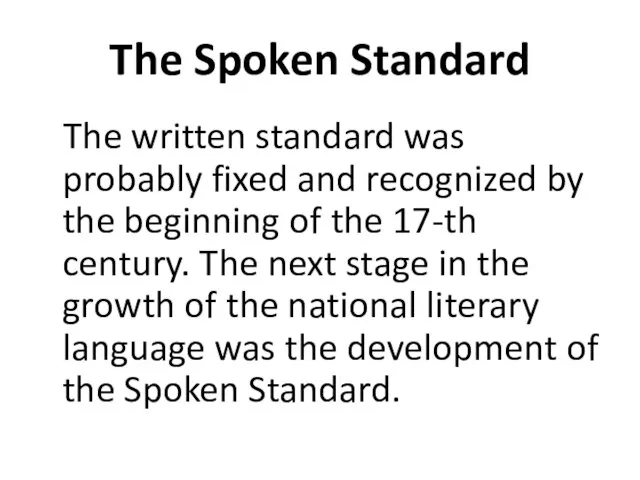
beginning of the 17-th century. The next stage in the growth of the national literary language was the development of the Spoken Standard.
Слайд 31Obviously in the 18-th century the speech of educated people differed from
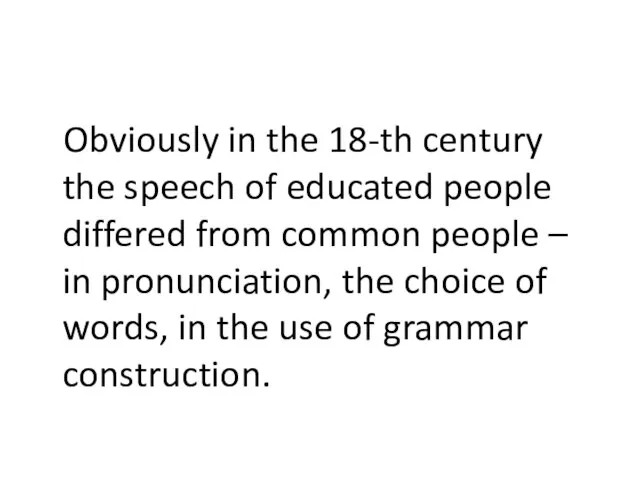
common people – in pronunciation, the choice of words, in the use of grammar construction.
Слайд 32Different works on language gave recommendations how to improve oral speech. So
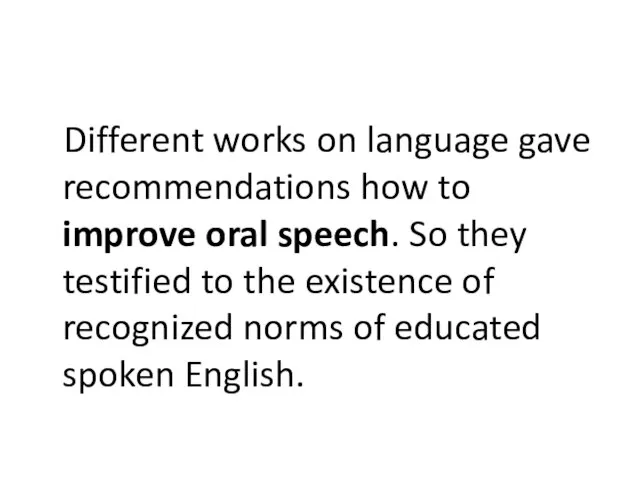
they testified to the existence of recognized norms of educated spoken English.
Слайд 33The emergence of the Spoken Standard goes back to the late 17-th
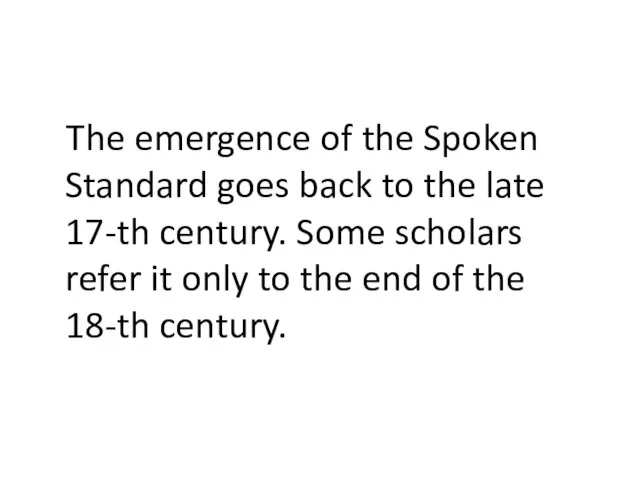
century. Some scholars refer it only to the end of the 18-th century.
Слайд 34The concept of Spoken Standard doesn’t mean the absolute uniformity of speech.
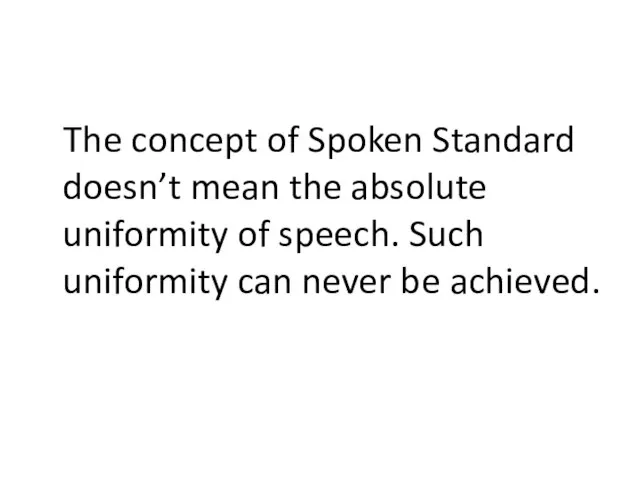
Such uniformity can never be achieved.
Слайд 35It means a more or less uniform type of speech used by

educated people and taught as “correct English” at schools and universities.


































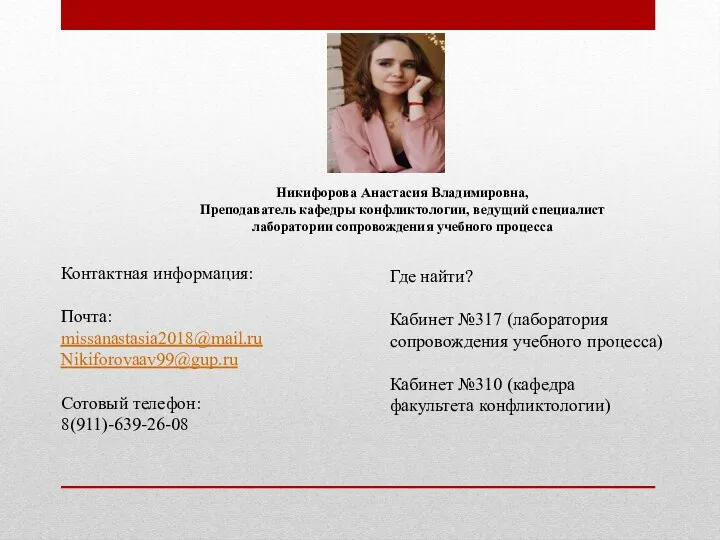 Медиация. Никифорова Анастасия Владимировна. Контактная информация
Медиация. Никифорова Анастасия Владимировна. Контактная информация Всё, что в жизни есть у меня - это ПК!
Всё, что в жизни есть у меня - это ПК! Тема: Отмена крепостного права в России
Тема: Отмена крепостного права в России Как подготовиться к путешествию, чтобы не попасть в экстремальную ситуацию
Как подготовиться к путешествию, чтобы не попасть в экстремальную ситуацию Конфликтное отношение
Конфликтное отношение Презентация на тему Скульптура Древней Греции
Презентация на тему Скульптура Древней Греции ФАЙЛЫ И ПАПКИ
ФАЙЛЫ И ПАПКИ Подготовил ученик 4Б класса Никита Кравченко Руководитель О.А.Якунина
Подготовил ученик 4Б класса Никита Кравченко Руководитель О.А.Якунина Гнаталогия. Биомеханика и движения нижней челюсти
Гнаталогия. Биомеханика и движения нижней челюсти 198188, г. Санкт-Петербург, пр. Стачек, 72, тел.(812)924-2-925
198188, г. Санкт-Петербург, пр. Стачек, 72, тел.(812)924-2-925 Распознание растений зимой
Распознание растений зимой род. собрание
род. собрание Лед-монитор, Рыскулова – Жолан батыра
Лед-монитор, Рыскулова – Жолан батыра Устройство православного храма
Устройство православного храма Элементы отчета о реализации проекта
Элементы отчета о реализации проекта Презентация на тему Публичное выступление на общественно значимую тему
Презентация на тему Публичное выступление на общественно значимую тему «ПРАДЕДУШКА» БЕНЗИНА
«ПРАДЕДУШКА» БЕНЗИНА Интерьер кухни, столовой
Интерьер кухни, столовой Презентация на тему Основные этапы антропогенеза
Презентация на тему Основные этапы антропогенеза Чистое искусство
Чистое искусство Постановка задачдля решения методом ФСА
Постановка задачдля решения методом ФСА Graafisen suunnittelun toteuttaminen
Graafisen suunnittelun toteuttaminen Носимый термометр вшитый в одежду для детей на основе Arduino LilyPad
Носимый термометр вшитый в одежду для детей на основе Arduino LilyPad Runaways
Runaways АЭС
АЭС Марийский край и губернские реформы XVIII века. Гербы городов
Марийский край и губернские реформы XVIII века. Гербы городов Любовь в творчестве И. А. Бунина проект выполнили: Бабик О. В. Сивкова О. В.
Любовь в творчестве И. А. Бунина проект выполнили: Бабик О. В. Сивкова О. В. Тест по русскому языкутема «Имя прилагательное»
Тест по русскому языкутема «Имя прилагательное»